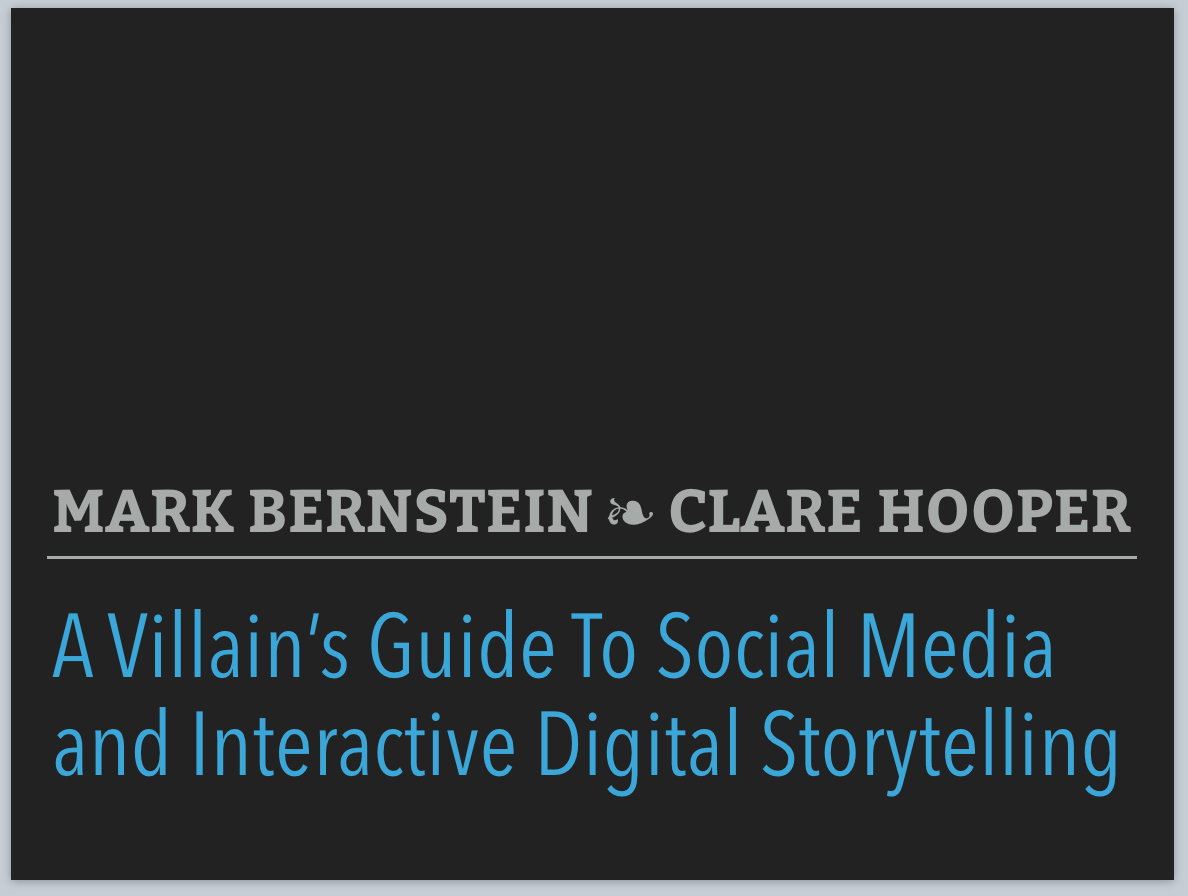Dublin

I’m off to the International Conference on Interactive Digital Storytelling at Trinity College, Dublin, where I’m giving a paper (with Dr. Clare Hooper) titled “A Villain’s Guide To Social Media and Interactive Storytelling.”
This is adapted from our Hypertext ’18 paper on villainy and social media, but digital storytelling is even more vulnerable to villainy than the Web. Almost all the villainies that apply to Twitter and Facebook — trolling, de-anonymizing, recruitment of villains, stealing candy from babies — inhere just as much in multiplayer games, Facebook entertainments, and interactive fictions. In addition, we also have the tons of research exquisitely attuned to the cultivation of victims who suffer from mild mental derangement that leave them vulnerable to spending vast amounts of money on Candy Crush and to following charismatic crackpots.
Plato saw the problem with fiction as lies and fake news, and he was not wrong. But we also see the perils of projection and transference. Gamification in social media is the political repurposing of transference: if Milo can hand you rewards or quatloos or followers, Milo loves you and you (of course) love Milo. It doesn't matter that you know the object of desire isn't real, that she’s a computational construct in an imaginary world:
She was a tree elf named Riyah. He was a water elf, Tildor. They came from different realms, but for the past three nights they’d qwested, traded, and killed together. They had hunted basilisks, slain dragons, and retrieved two diamonds, which Riyah carried in the bag hanging at her waist. She was an amazing marksman and beautiful, even for an Elf, her eyes huge, her body supple. Her breasts swayed as she ran, her quiver bouncing behind her. — The Chalk Artist, p.24
Of course, Riyah isn’t precisely real: she’s an actor, employed to please game fanatics like Tildor. But she is also real, and the boy who is Tildor meets her in a stairwell at a conference. He’ll do anything for her. Of course he will.
We’re really quite good at finding weakness and depravity through new media, and at recruiting an audience vulnerable and eager to be deceived. The religious right and the extremist right have spent a decade reading our research and then deploying it to give us Trump and Brexit, the death penalty for seeking an abortion, Golden Dawn, UKIP, and Jobbik. If you know of any papers that help us find and retain an audience of the wise and virtuous, I’d like to know about them.
The dangers of fiction have always been tempered by the fact that the storyteller had to take the audience as she found it. In the market of ideas, anyone might wander by, and anyone can heckle. New media lets us tune the story to each reader, which means that new media, in villainous hands, can tune the story to each reader’s weakness while taking care that readers who are not weak (or who are Democrats) don’t even know there’s a story until it’s far, far too late.